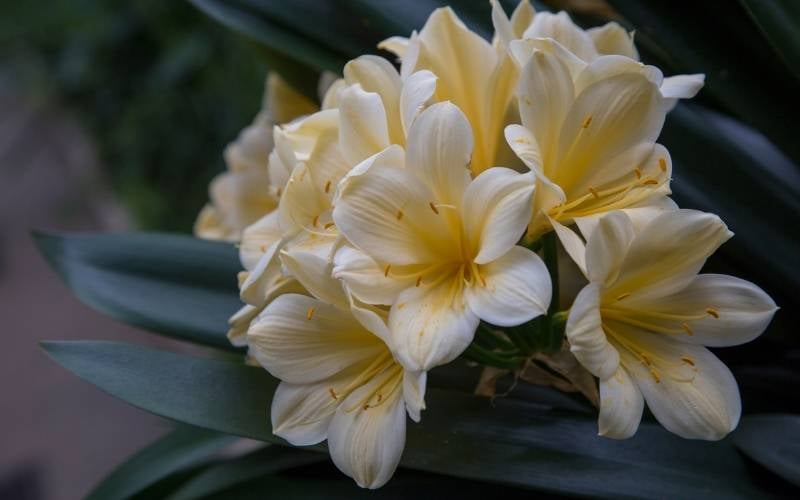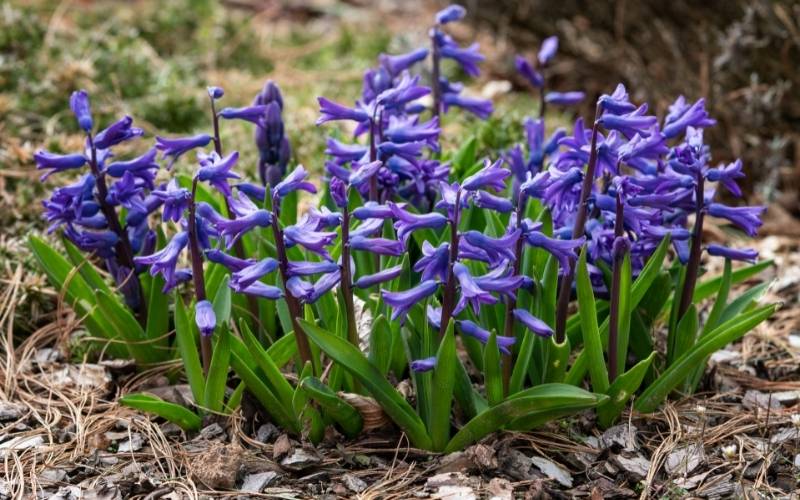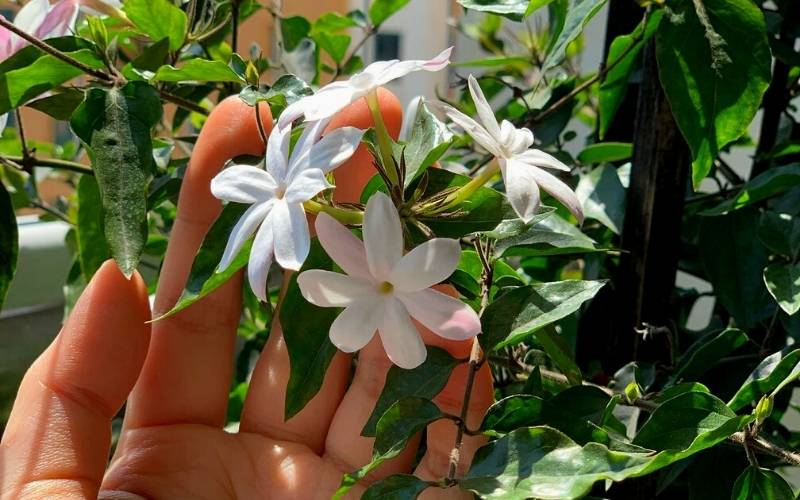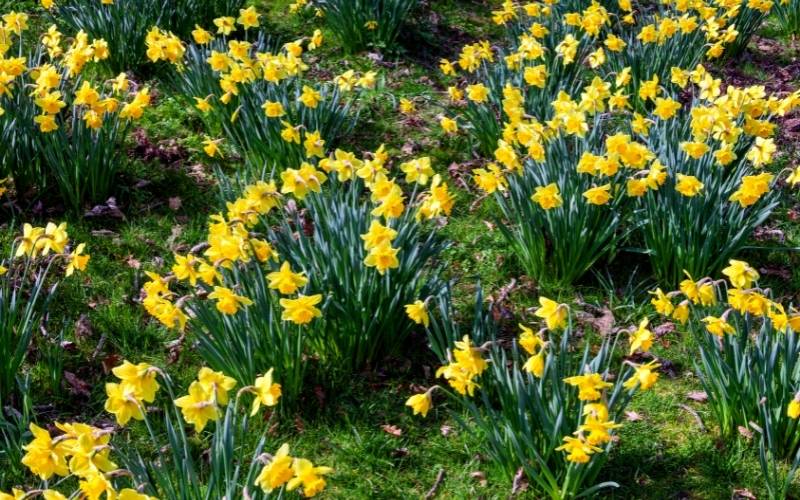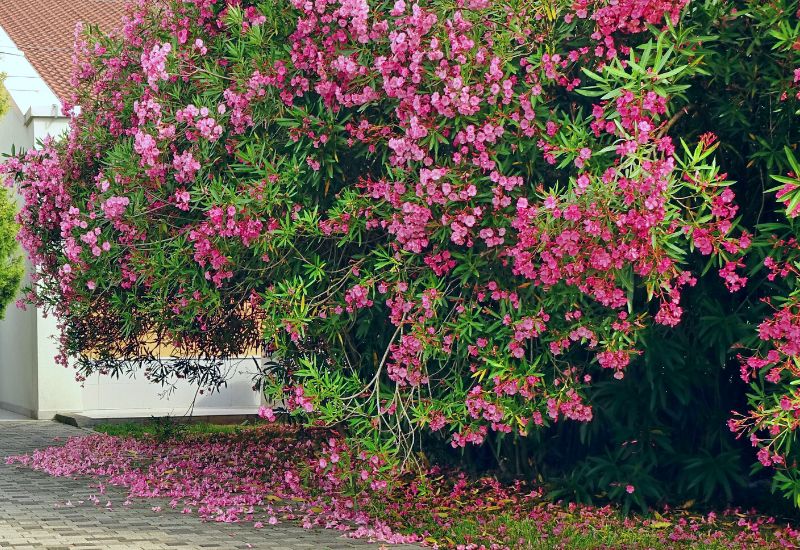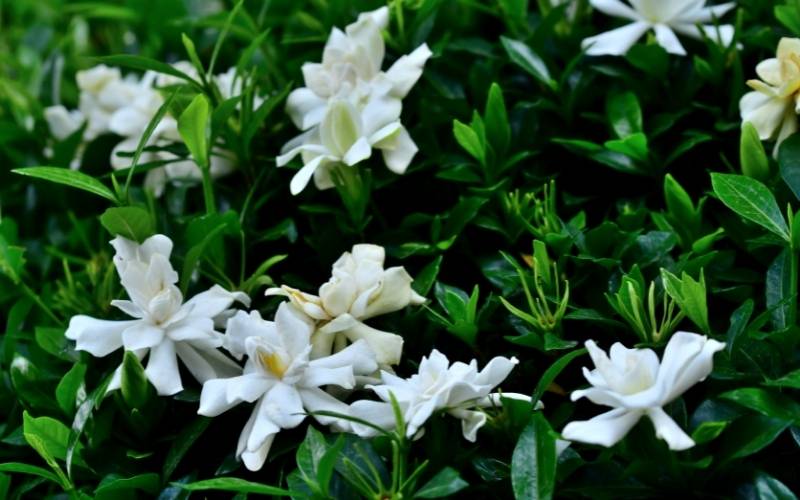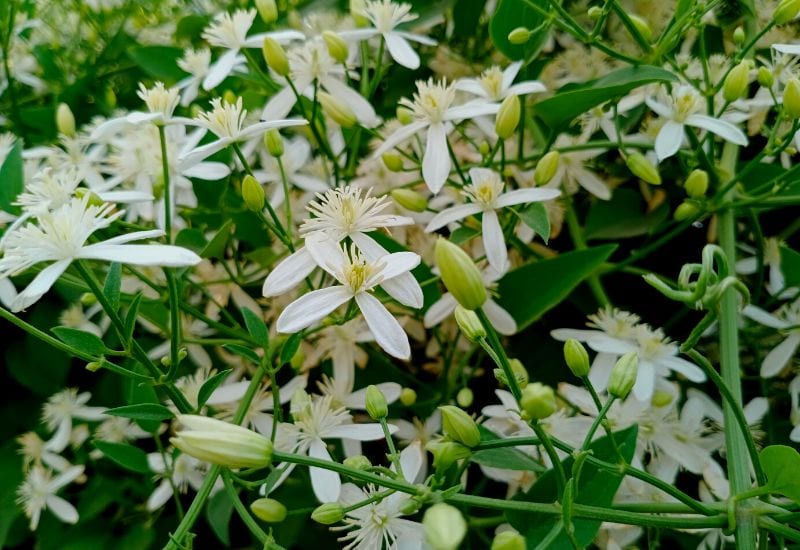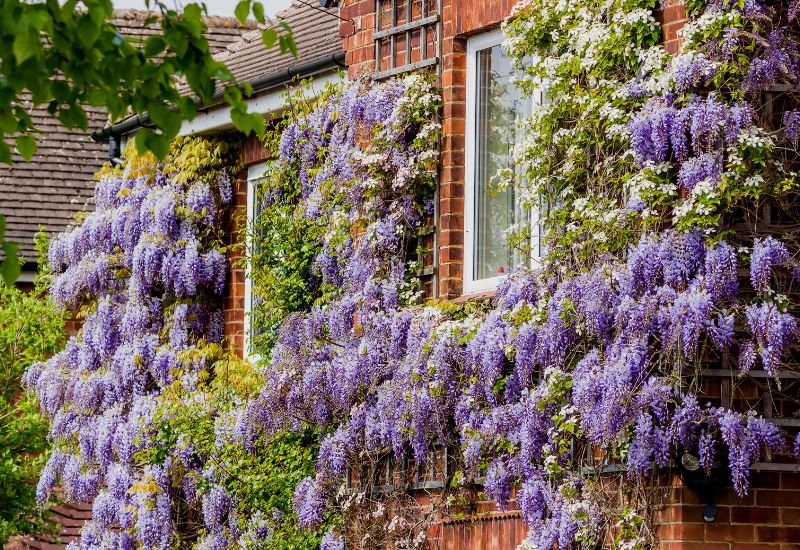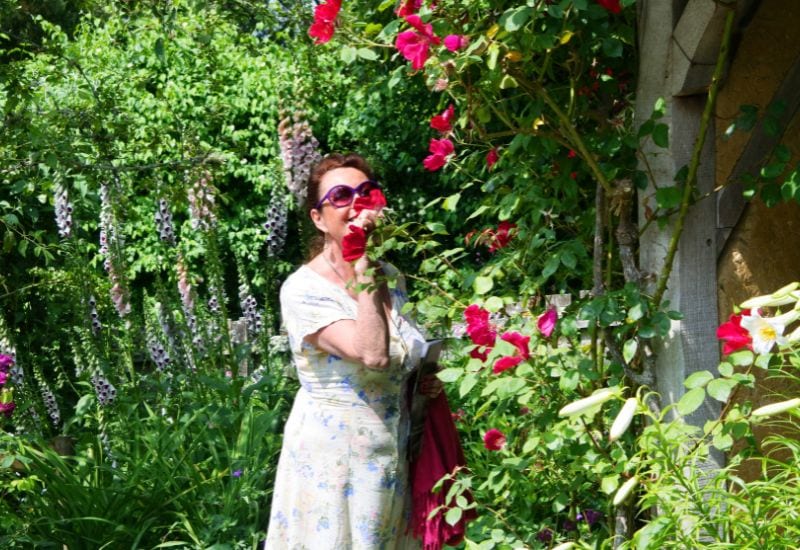
Most fragrant flowers can fill our nostrils and hearts with their intense, intoxicating smell and embalm whole gardens with their aromatic presence. It’s not just the colors we love in them: we love their fragrance too.
Fruity, floral, sweet, or musky aromas make blooms unique and will perfume your garden with their blissful scent. From the famous jasmine to the vanilla scent of oleander and then the calming essence of lavender, there are so many delightfully scented blooms you can grow a “smell-scape” in your garden to enjoy with all your senses and not just sight.
With Sun-loving annuals and shade-loving perennials to enchant your sense of smell, sweetly scented varieties can bloom at any time of the year, so you can have a perfume-filled garden when the days are long and hot as well as when it’s cold outside. Yes, even in winter!
Some are much stronger than others, though, and if you want to “cultivate the air” and not just the soil, you want fragrant plants with the most intoxicating fragrances ever, as well as the most pleasant to your nose and taste!
No flower has the same fragrance, but if you want to know what exactly they smell like, and which are the most powerful aromas in the world of blooms… So take a deep breath and read on – you will be in heaven by the end of this page!
How To Describe Flowers Smells
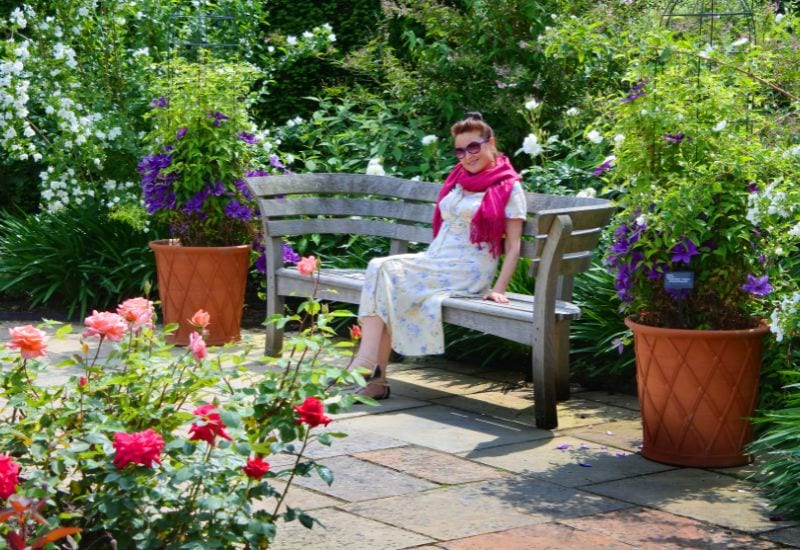
Now you know which varieties smell best, but it’s hard to describe odors, so we can start with a little “dictionary of smells” so you can understand their aromas exactly.
Describing the fragrance of flowers is not easy; describing any smell is a complicated task. We say things like “good” for a rose and “bad” for old socks, or we say “light” and “strong” or maybe “heady.” However, this tells us nothing in terms of the quality of the smell.
So, let’s get our ideas clear… How can we describe the smell of a flower? There are some categories of odor, and they also apply to plants and blooms. But note that any flower can have a mix of these categories, which often happens.
But let’s see which categories we must describe correctly; this will make your reading more pleasant and informative.
But now, without further ado, are you ready to see – oops, I meant “sniff” – the most fragrant flowers from all over the world?
18 of the Most Fragrant Flowers That Will Make Your Garden Smell Irresistible
Clear your nose and get ready to smell the most fragrant varieties of flowers ever! And at the end, you will feel heady with their unique scents…
We picked the 18 scented flower varieties with the strongest aromas and fragrances ever for you, your nose, and your garden…
1. ‘Mrs. Simkins’ Pink (Dianthus hybrid ‘Mrs. Simkins’)
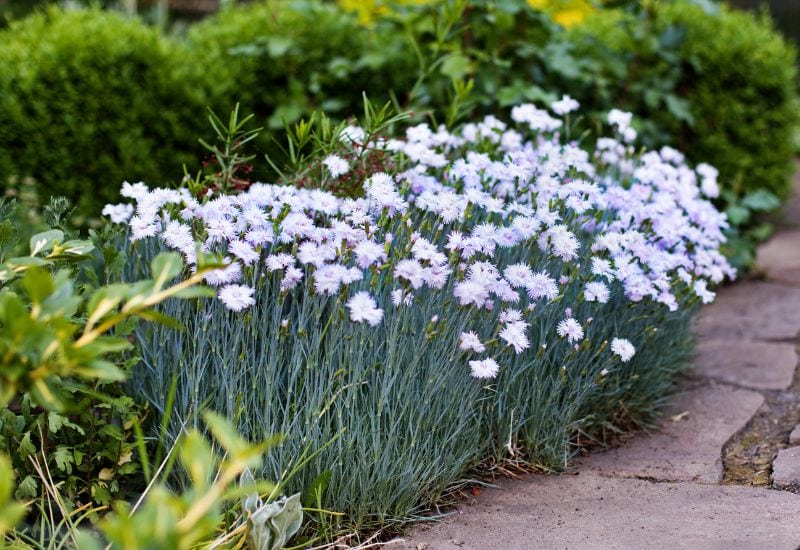
I actually think that the small pink called ‘Mrs. Sinkins’ has the most beautiful fragrance in all the world! With a flowery and slightly fruity aroma, a single clump of these little wonders can literally fill your garden with their smell!
Super solid and impossible to mistake, this heirloom variety was introduced by Charles Turner of the Royal Nursery, Slough, UK, in 1868. It quickly became a garden classic thanks to its impressive and intoxicating aroma.
With fringed white petals and double flowers, ‘Mrs. Simkins’ is a hardy Dianthus that forms bushy clumps of blue-green, pointed leaves and blossoms generously throughout the summer months.
It has become challenging to find this flower in generic garden centers, though, and its offspring ‘Memories’ has almost replaced it with its bigger blooms, but trust me, the fragrance does not even compare!
2. Port Sunlight’ English Rose (Rosa ‘Port Sunlight’)
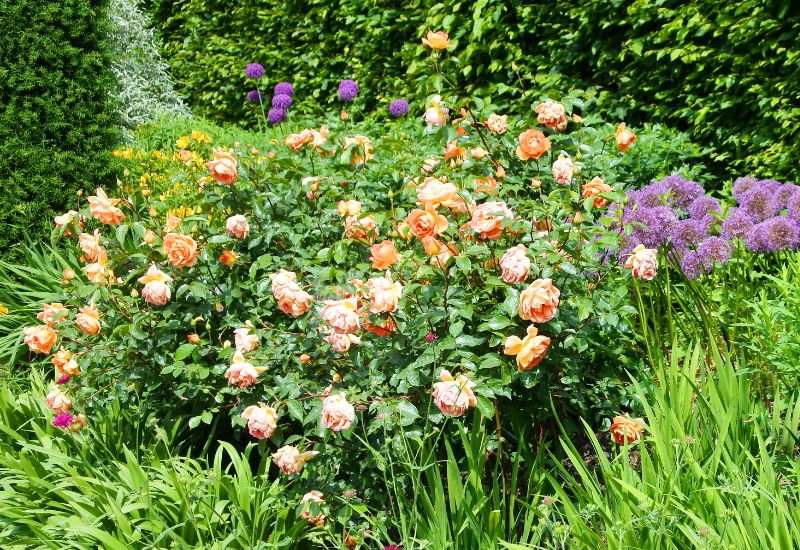
It’s hard to say which English rose is the most fragrant, but ‘Port Sunlight’ is indeed up at the top! It has a solid tea rose fragrance, and it was introduced by world-famous breeder David Austin 2007, a specialist in scented cultivars.
The blooms are 5.5 inches wide (9.0 cm), cupped, and fully doubled, with a partly quartered petal arrangement. The color is an impressive apricot peach with pink and yellow touches, quite delicate and rare.
And the blossoms will stay with you all through the season, as it is a repeat bloomer! It is also a worthy winner of the Award of Garden Merit by the Royal Horticultural Society.
Perfect in a rose garden, ‘Port Sunlight’ is also suitable as an accent plant or in borders, and you can even get it to climb!
Don’t forget to bring its fresh and strong fragrance indoors, as it makes a perfect cut flower too!
3. English Lavender (Lavandula angustifolia)

There are wide different varieties of lavender, including French stoechas… The most fragrant, however, is English lavender.
Unlike the soapy aroma of the French variety (Lavandula dentata), it has the unique flowery and fresh scent with balsamic and aromatic notes we find in essences, perfumes, and oils…
This intoxicating smell comes from the thin, bluish foliage and the massive blooms… You can have it in many colors, white, pink, blue, or in the violet range.
If you’re lucky enough to live in a temperate region, English lavender is the perfect choice for your garden. It survives well in colder climates and is also an excellent option for attracting pollinators like bees and butterflies.
In your garden, you can use it in beds and borders, but it also has an essential function at home; in fact, it is one of the most common aromatherapy plants, thanks to the soothing effect of its fragrance!
4. Casa Blanca’ Oriental Lily (Lilium ‘Casa Blanca’)
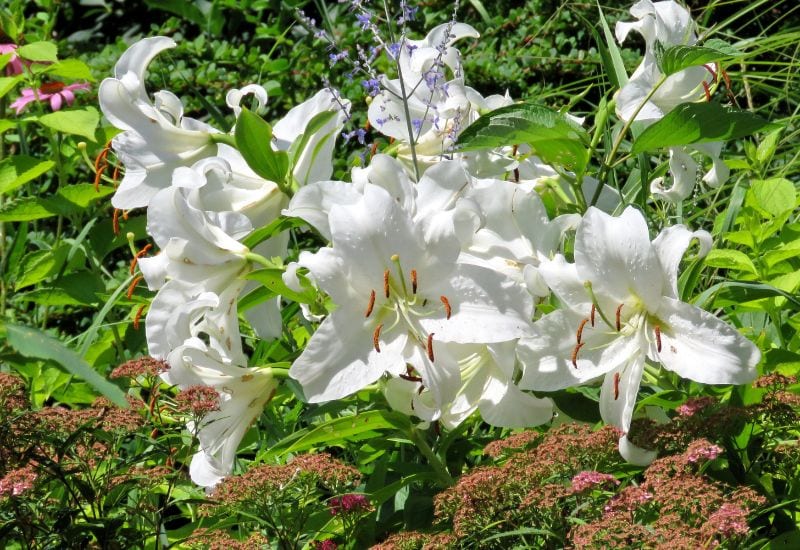
Almost all variant of lilies have a strong fragrance, but ‘Casa Blanca’ has one of the most intoxicating of all. Sweet but also refreshing, the aroma is welcoming and comforting, floral and fresh but with a jasmine touch, and it comes with massive snow-white blooms with curved petals and copper anthers that add that extra exotic touch.
You can get 6 to 8 on any stem, which is a bonus. Regarded as the best white oriental lily variety ever, it has also won the Award of Garden Merit by the Royal Horticultural Society.
Similar highly fragrant varieties are ‘Dizzy’ (white with red central stripes and dots), ‘Star Fighter’ (red and deep magenta with white margins), and ‘Tom Pounce’ (Pink with prominent canary lines). So, you have a color choice as well!
Excellent in flower beds or containers, the ‘Casa Blanca’ oriental lily is also a stunning cut flower, and its fragrance will not fade until the bloom is spent, lasting many days!
5. Freesia (Freesia spp.)
The heady fragrance of freesias has a floral base and fresh, slightly sweet, fruity, and even powdery notes.
One of the most refined aromas you can ever find in a garden flower is also used in perfumes.
Feminine in all its traits, this bulbous perennial has arching stems with showy and brightly colored funnel-shaped blooms in a wide range of shades: white, yellow, orange, red, pink, and violet!
And you can pick and mix any colors you want; the aroma is always solid and beautiful!
One of the easy to grow and very rewarding flowers out there, freesias can light up flower beds or containers with their colors and smell, and they are one of the most loved cut flowers ever!
6. Dutch Hyacinth (Hyacinthus orientalis)
With its intense floral aroma, vegetal aquatic accents, and sweet and spicy notes, Dutch hyacinth has a smell all the world loves! The cluster of fleshy, star-shaped flowers packed together come on a large stem above the long, tongue-like green foliage, with all their fragrance.
The most common colors are white, blue, or pink. Still, there are varieties in the bright magenta range (the award-winning ‘Miss Saigon’), dark purple-violet (‘Peter Stuyvesant’), and even an unusual dark plum red cultivar, ‘Woodstock.’ Take your pick; the smell is always intense!
Excellent for spring flower beds, oriental hyacinth is also ideal for small pots and containers, and you can even grow it in a small jug of water, as long as the bulb is kept safe above the water level.
And this makes it easy to have it indoors, for a fresh fragrance and colorful touch, even in winter!
7. Poet’s Jasmine (Jasminum officinale)
The distinct smell of jasmine is globally known, and the poet’s jasmine is one of the most aromatic types.
This large semi-evergreen shrub from Asia, with white star-shaped blossoms that open from purple and pink buds, has a heavenly aroma that can fill whole gardens and roads if you grow it… It is also a long bloomer, keeping your green haven colorful and fragrant to the first frost!
Its strong twining stems with rich green leaves guarantee it will cling to fences, arbors, and pillars, bringing its beauty and scent high up on your wall or far around your property.
Poet’s jasmine is another magnet for pollinators and a robust and low-maintenance plant to grow.
It’s a lovely, fragrant bloom with various uses. It also serves as an aroma in aromatherapy and is featured in some cosmetics and oils.
8. Daffodil (Narcissus spp.)
All daffodils and jonquils have the very smell of spring itself. Heady, floral with green notes, we all recognize it when the new season comes.
However, some varieties are notable for their strong fragrance, like the golden yellow and white ‘Fragrant Breeze’ or the native poet’s daffodil, especially the subspecies Narcissus poetics variant. Recurves, whose yellow crown has red edges, and ‘Golden Dawn’ is bright yellow with an orange center.
Add the iconic beauty and generosity of the blooms and its low maintenance, and you get the perfect choice to make your garden smell like heaven as soon as winter is over and at a low cost.
Most daffodil varieties will also readily naturalize, making them ideal for big flowers and fresh scents in various garden styles, especially informal ones. In addition, it may bloom indoors during the winter, which is excellent for areas where temperatures drop below freezing.
9. Oleander (Nerium oleander)
Oleanders have an odd scent: double flowers and white types smell significantly stronger than single ones!
This vibrant and low-maintenance shrub emits a sweet fragrance with hints of vanilla, talcum, and apricot. The blooms can be white, pink, orange, or red; they are always bountiful and sure to catch anyone’s eye.
Oleanders are a real treasure to any garden; they’re practically indestructible, and their blooms are always a wonder of the natural world! They’re perfect for coastal or Mediterranean gardens. It’s virtually impossible to kill oleanders, and their blossoms are always beautiful.
10. Aimee’ Gardenia (Gardenia Jasminoides ‘Aimee’)
If you want a safer gardenia that still smells intense, go for the ‘Aimee’ cultivar! With a sweet, zesty aroma and cream and coconut undertones, this variety also offers showy ivory white flowers that reach 5 inches across (12.5 cm)!
This evergreen has two types of flowers: a double rose-shaped bloom and a lance-shaped, dark green, and very glossy foliage backdrop. This cape, jasmine, and garden lady provide you the best of both worlds.
While it is not difficult to keep, ‘Aimee’ gardenia is one of the most attractive and delicate accent shrubs; grow it in any miniature garden where you and your guests can smell it.
11. Night Blooming Jasmine (Cestrum nocturnum)
The night-blooming jasmine plant does not belong to the jasmine family, but it gives off a robust and intoxicating scent similar to true jasmine. The main difference is that the fragrance of the night-blooming jasmine is much stronger at nightfall.
So, if you want to enjoy hours spent outdoors in the moonlight with a relaxing floral aroma wafting through the air…this is the ideal plant for you! Additionally, the vine can be trained relatively quickly to tie itself around a trellis or pergola.
This evergreen shrub has clusters of long, nodding, and trumpet-shaped cream-white flowers close at night. It is native to Mexico, Central America, and the Caribbean. The plant also bears pointed dark green leaves and white berries, which birds eat–but none for humans! The entire plant is poisonous to us.
Night-blooming jasmine is an excellent choice because it is virtually pest and disease free. Additionally, its fragrance is one of its main assets, though by no means the only one.
12. Wisteria (Wisteria spp.)
Wisteria, like lilac, has a powdery tone and is similar to but sweeter than the scent of lilacs. Wisteria is a fragrant queen of gardens with an exquisite scent.
Its impressive blossoms are a worldwide event in some cases, and the drooping racemes packed with flowers in shades from white to violet via blue and lavender pink bring the fantastic scent of this vine above your head, where pollinators gather to enjoy its nectar.
The like other elegant flower out there, this plant is able to enhanced the lookof your garden by its delicate texture of the green, pinnate foliage and, of course, its ability to transform walls, fences, gates, or pergolas into real corners of heaven.
With a wide variety of fragrant wisterias to choose from, you’re sure to find the perfect one for your garden. Position it facing south, southeast, or southwest and enjoy its massive colorful displays yearly.
13. ‘Daybreak’ Magnolia (Magnolia ‘Daybreak’)
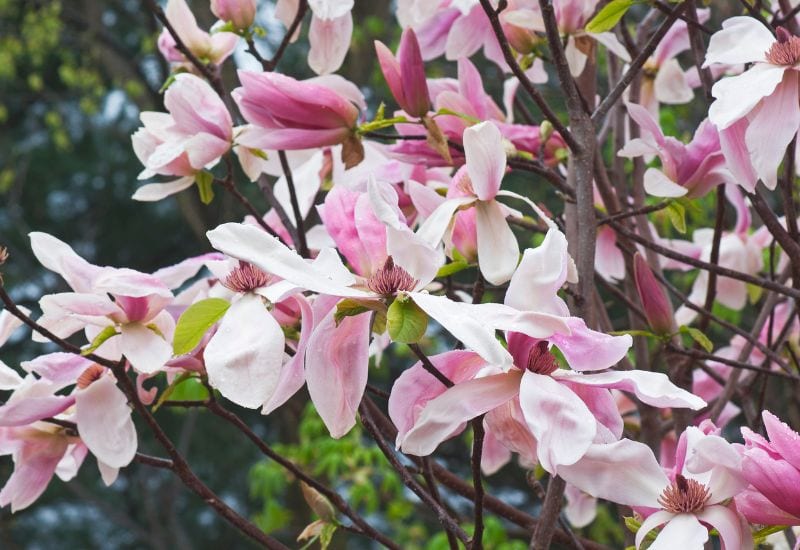
Magnolias have a sweet and lightly fruity floral scent that is reminiscent of champagne, but in the ‘Daybreak’ variety, this fragrance is particularly potent.
It won a Royal Horticultural Society Award of Garden Merit for its magnificent blooms, which reach a whopping 10 inches in diameter (25 cm)! On the inside, the 8 tepals are candid white, but on the outside, they’re rose pink.
They have a green blush when emerging from the bud… The foliage isn’t as leathery as others; it’s mid-green and elliptical with a copper undertone when young.
This cultivar is also ideal for urban settings because it is pollution tolerant and has an added bonus: unlike other magnolias, it blossoms quite late, so it escapes frost damage.
The ‘Daybreak’ magnolia tree is the perfect perfumed addition to any city garden; low maintenance and suitable to many styles, including oriental ones.
14. ‘Starfire’ Garden Phlox (Phlox paniculata ‘Starfire’)
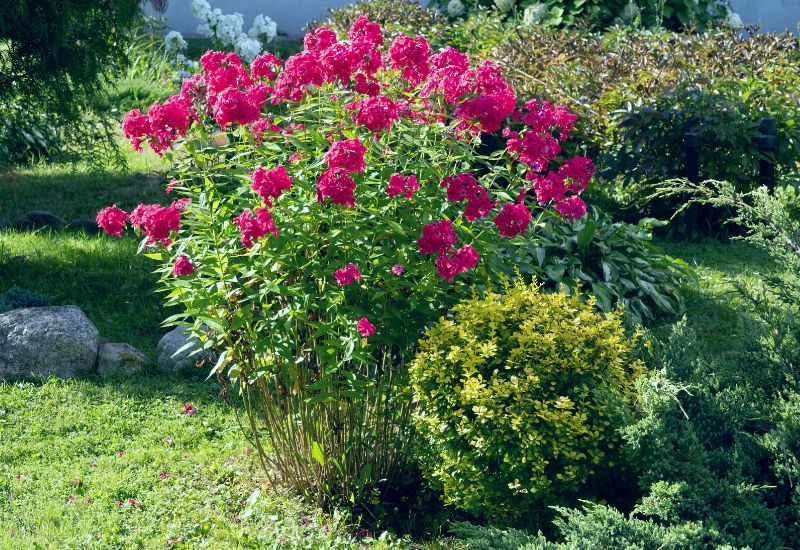
Phlox is a perennial flowering plant in the pastel phlox family. It has fragrant flowers, garden phlox (Phlox paniculata) being the most fragrant of all.
The headiest scent of all comes from ‘Starfire,’ which is a cultivar of ‘Starburst’ (a cultivar of ‘Succulent’)!
Yet another worthy winner of the Award of Garden Merit by the Royal Horticultural Society, this beauty has bright pyramidal clusters of pink-red cherry flowers that attract lots of butterflies and even hummingbirds with their aroma similar to that of pinks and carnations, but with a touch of honey and almond as well. The purple stems and red-tinged leaves complete the show with a touch of extra color!
Easy to grow from seed and propagate by clump division, ‘Starfire’ garden phlox is a gift to any flower bed or border, and you can share it with your friends for a fragrant neighborhood at a meager cost!
15. Nosegay or White frangipane (Plumeria alba)
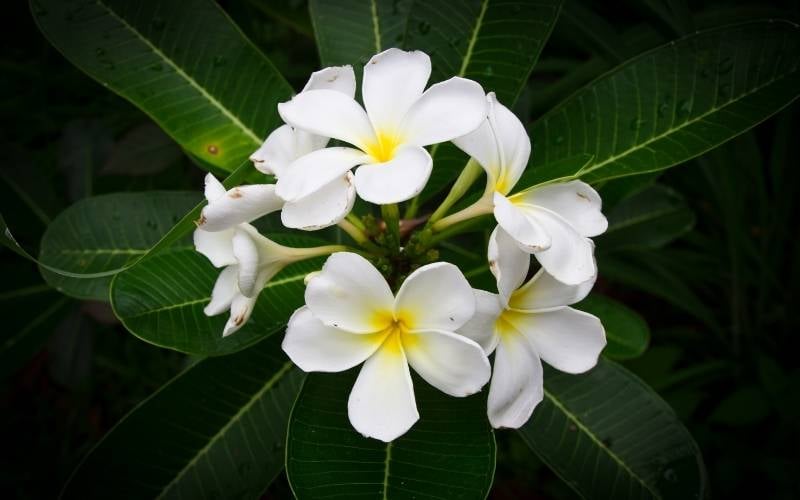
West Indian Jasmine, more commonly known as frangipane, is a small tree native to Puerto Rico and the Lesser Antilles.
Despite its name, it does not produce jasmine flowers. Instead, it produces bouquet-like clusters of snow-white flowers with a canary and then golden center. These flowers are fragrant and last for the entire season.
The branches are succulent, and they are covered in dark green, leathery and oval leaves that reach a significant 12 inches in length (30 cm).
Exotic looking and uniquely smelling, it can also be grown as a shrub, and its blooms are often threaded into leis and worn in the hair, so you can also enjoy a touch of local folklore.
Ideal for warm and tropical gardens, frangipane or West Indian Jasmine is a really precious tree or shrub that can turn your garden into a smell-scape from spring to the end of fall.
16. ‘Kiftsgate’ Rambling Rose (Rosa filipes ‘Kiftsgate’)
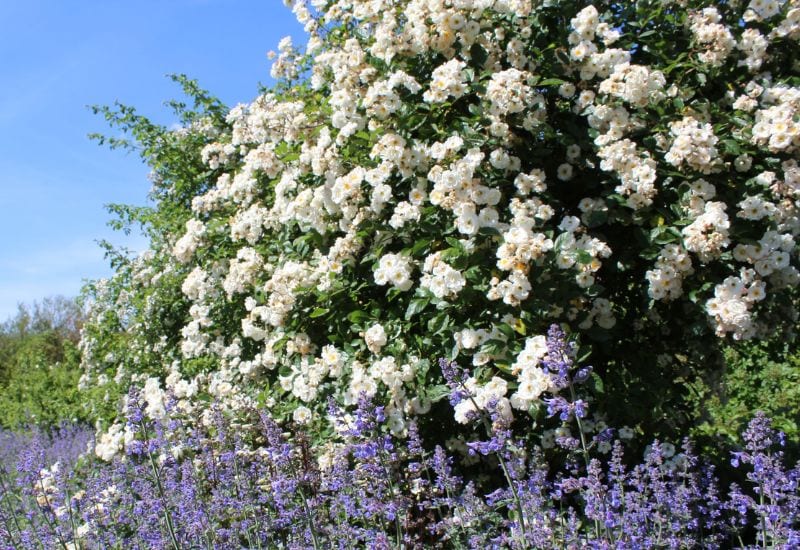
So many roses have a powerful fragrance, so we chose another one among the most fragrant for you, the ‘Kiftsgate’ rambling rose. And it’s not even comparable to the English rose known as “Port Sunlight.” The scent is strong yet musky, which is typical of many wild roses. It is a rambler, according to its name.
This plant’s blooms are single, white, and have golden anthers. You’ll get plenty of flowers that give off a woody look and aroma. It’s also a strong variety that produces bright orange hips in the fall, which are edible!
This highly scented and giant cultivar has also won the prestigious Award of Garden Merit from the Royal Horticultural Society.
Introduced by E. Murrel in 1954, the ‘Kiftsgate’ rambling rose is perfect for bringing lots of colors, foliage, and fragrance to wall side borders, walls, and fences, for a naturalistic look and an informal style garden.
17. Sweet White Violet (Viola blanda)
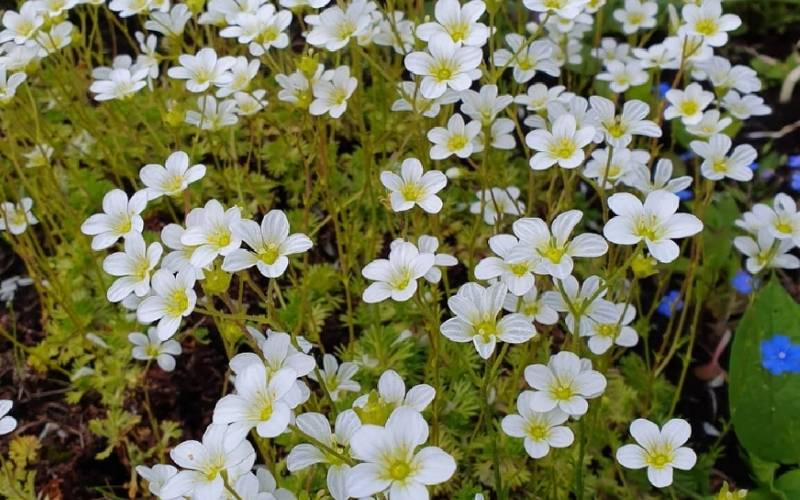
Sweet White Violet (Viola blanda) has a clean, lovely scent that is soft, candy-like, and woody floral, sweet white violet having one of the most fragrant scents.
This lovely little flower is small and delicate, with white blooms adorned with violet-blue veins that lead the eye to the center, and it is native to North America.
This flower is easy to naturalize, and within a few years, you’ll be able to enjoy bright green carpets of beautiful heart-shaped leaves that bloom once a year, followed by flower buds that pop their heads just above the foliage and spread under trees with their stolons.
There are many highly scented violets to grow, including the classic sweet violet (Viola odorata), which deserves mention, with violet petals, so take your pick!
Excellent for flower beds and containers, and as ground cover, they are easy to grow, low maintenance, and edible!
18. Honeysuckle (Lonicera japonica)
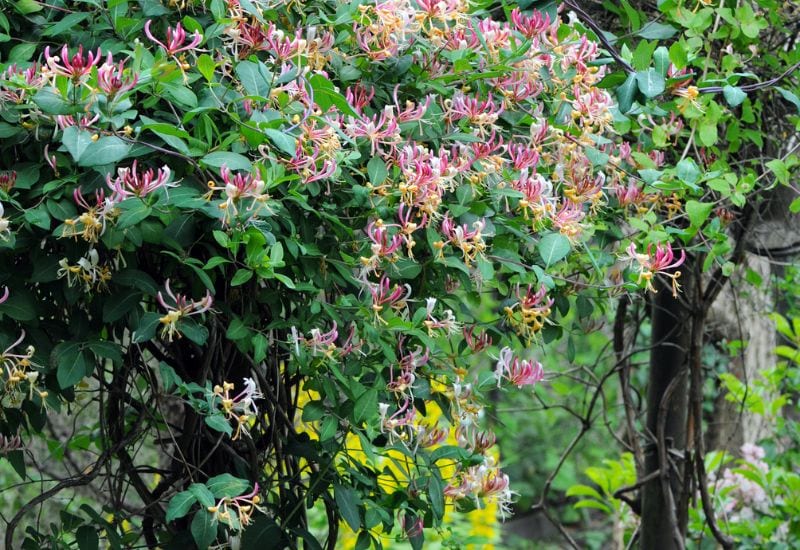
A classic end to this fragrant list would be honeysuckle, which has a powerful floral scent and deserves to take first place. It contains pale blooms that turn golden yellow as time goes on.
These tiny blooms look like the wings of insects, very elegant, airy,, and light, with protruding pistils and an inviting throat for butterflies and pollinators.
Although their display might not be extravagant, they make up for it with a strong fragrance. They also grow pretty abundantly. In addition, glossy black berries will appear late in the season, attracting birds to your garden.
Lastly, the evergreen foliage–dark, elliptical, and shiny–will provide greenery throughout every season!
Honeysuckle may be cultivated on pergolas, trellises, or arbors, as well as on your fence, to provide a lush and green shrub with fragrant blooms all summer long; it’s only appropriate for simple garden ideas.
Sweet Smelling And Beautiful Flowers
Don’t you feel heady already with the intense fragrance of all these beautiful flowers? Sometimes we forget that we want blooms not just for their striking colors and shapes but also for their scent, and you have just gone through the list of the most fragrant varieties ever! From now on, your garden will smell like heaven!

Written By
Amber Noyes
Amber Noyes was born and raised in a suburban California town, San Mateo. She holds a master’s degree in horticulture from the University of California as well as a BS in Biology from the University of San Francisco. With experience working on an organic farm, water conservation research, farmers’ markets, and plant nursery, she understands what makes plants thrive and how we can better understand the connection between microclimate and plant health. When she’s not on the land, Amber loves informing people of new ideas/things related to gardening, especially organic gardening, houseplants, and growing plants in a small space.

